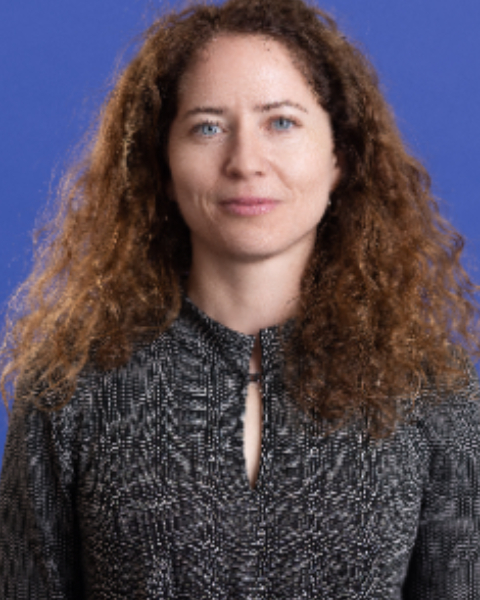PQA 06 - PQA 06 Biology and Patient Reported Outcomes/QoL/Survivorship Poster Q&A
2877 - Evaluation of Financial Distress among Patients with Cancer in a Country with a Public Health Care System
Monday, September 30, 2024
5:00 PM - 6:00 PM ET
Location: Hall C
Screen: 4

Ivica Ratosa, MD, PhD
Institute of Oncology Ljubljana
Ljubljana, Ljubljana
Presenter(s)
K. Vörös1, M. Skubic1, M. Bavdaz2, P. Dosenovic Bonca2, A. Perhavec1,3, T. Redek2, A. Secerov Ermenc1,4, H. B. Zobec Logar1,4, and I. Ratosa1,4; 1Faculty of Medicine, University of Ljubljana, Ljubljana, Slovenia, 2Faculty of Economics, University of Ljubljana, Ljubljana, Slovenia, 3Division of Surgical Oncology, Institute of Oncology Ljubljana, Ljubljana, Slovenia, 4Division of Radiation Oncology, Institute of Oncology Ljubljana, Ljubljana, Slovenia
Purpose/Objective(s): Most available validated tools evaluating financial distress were designed for private healthcare systems. This study aimed to quantify the levels of objective and subjective financial toxicity (FT) in patients with cancer in a country with a public healthcare system, by a specifically developed questionnaire. Materials/Methods: We developed a questionnaire and collected data using a survey methodology. The prospective and cross-sectional investigation was carried out at the Comprehensive Cancer Center from June to October 2023. We used the non-parametric Kruskal-Wallis test to examine variance owing to a non-normal distribution.
Results: A total of 901 questionnaires were distributed; 587 of these were satisfactorily completed, yielding a 65% response rate. Median age of participants was 64 years (range: 25–90). The majority of patients were diagnosed in the public sector due to symptoms and signs (n=431, 73.4%), screening programs (n=55, 9.4%), preventive screening (n=65, 11.1%), or other reasons (n=3, 0.1%), with only a minority diagnosed in the private sector (n=60, 10.2%). Patients were undergoing active therapy (n=406, 69.2%), were in the follow-up after primary cancer treatment (n=118, 20.1%), were on a "watch and wait" approach (n=48, 8.2%), or receiving palliative care (n=14, 2.4%). Approximately half of the patients (n=299, 50.9%) retired before their cancer was diagnosed. Because of the treatment, about a third (n=198, 33.7%) of responding patients reported a negative change in their financial satisfaction (subjective FT) and similar percentage of patients (n=166, 28.3%) reported a change in financial capability after diagnosis (objective FT). Most patients (n=500, 85%) reported no significant out-of-pocket expenses as a result of their disease. Younger patients (p<0.001), females (p<0.004), patients with lower net income per household (p<0.001) and patients who were employed before the disease (p<0.001) were at greater risk for FT. Compared with patients diagnosed with prostate, lung, and head and neck cancers, patients with breast cancers and a group, that included “other cancers” (melanoma, colorectal, endometrial, lymphoma, skin, esophageal, stomach, kidney, and bladder cancers) had higher subjective (p<0.008) and objective (p<0.020) FT, respectively. Area of residence, religion, treatment participation, and number of treatment modalities (systemic therapy, radiation, surgery) did not significantly affect financial competence and satisfaction. Patients financial satisfaction changed negatively with tumor recurrence.
Conclusion: This study presents the first comprehensive assessment of FT among patients with cancer in a country with a public health system. Using an individual questionnaire, we concluded that approximately 30% of patients with cancer experience FT. No subjective or objective FT change was recorded by two thirds of patients. Most patients believed they had no big out-of-pocket costs due to their disease and treatment.
Purpose/Objective(s): Most available validated tools evaluating financial distress were designed for private healthcare systems. This study aimed to quantify the levels of objective and subjective financial toxicity (FT) in patients with cancer in a country with a public healthcare system, by a specifically developed questionnaire. Materials/Methods: We developed a questionnaire and collected data using a survey methodology. The prospective and cross-sectional investigation was carried out at the Comprehensive Cancer Center from June to October 2023. We used the non-parametric Kruskal-Wallis test to examine variance owing to a non-normal distribution.
Results: A total of 901 questionnaires were distributed; 587 of these were satisfactorily completed, yielding a 65% response rate. Median age of participants was 64 years (range: 25–90). The majority of patients were diagnosed in the public sector due to symptoms and signs (n=431, 73.4%), screening programs (n=55, 9.4%), preventive screening (n=65, 11.1%), or other reasons (n=3, 0.1%), with only a minority diagnosed in the private sector (n=60, 10.2%). Patients were undergoing active therapy (n=406, 69.2%), were in the follow-up after primary cancer treatment (n=118, 20.1%), were on a "watch and wait" approach (n=48, 8.2%), or receiving palliative care (n=14, 2.4%). Approximately half of the patients (n=299, 50.9%) retired before their cancer was diagnosed. Because of the treatment, about a third (n=198, 33.7%) of responding patients reported a negative change in their financial satisfaction (subjective FT) and similar percentage of patients (n=166, 28.3%) reported a change in financial capability after diagnosis (objective FT). Most patients (n=500, 85%) reported no significant out-of-pocket expenses as a result of their disease. Younger patients (p<0.001), females (p<0.004), patients with lower net income per household (p<0.001) and patients who were employed before the disease (p<0.001) were at greater risk for FT. Compared with patients diagnosed with prostate, lung, and head and neck cancers, patients with breast cancers and a group, that included “other cancers” (melanoma, colorectal, endometrial, lymphoma, skin, esophageal, stomach, kidney, and bladder cancers) had higher subjective (p<0.008) and objective (p<0.020) FT, respectively. Area of residence, religion, treatment participation, and number of treatment modalities (systemic therapy, radiation, surgery) did not significantly affect financial competence and satisfaction. Patients financial satisfaction changed negatively with tumor recurrence.
Conclusion: This study presents the first comprehensive assessment of FT among patients with cancer in a country with a public health system. Using an individual questionnaire, we concluded that approximately 30% of patients with cancer experience FT. No subjective or objective FT change was recorded by two thirds of patients. Most patients believed they had no big out-of-pocket costs due to their disease and treatment.
